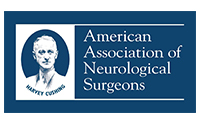What is Chiari Malformation?
Chiari Malformation (CM) is a condition in which the brain tissue extends into your spinal canal. This occurs when part of your skull is abnormally small or misshapen, causing it to press on the brain and forcing it downward.
Chiari malformation is categorized into three types:
- Type 1 Chiari malformation is the most common type that develops when the skull and brain are still growing. As a result, symptoms may not appear until late childhood or adulthood.
- Type II and type III are pediatric forms, and are present at birth.
What are the Causes of Chiari Malformation?
Chiari malformation that occurs during the fetal stages is also referred to as primary or congenital Chiari malformation. It may be caused due to several factors which include:
- Genetic mutations
- Maternal diet that lacked certain vitamins or nutrients during pregnancy
- High fever or infection during pregnancy may affect fetal development
- Illegal drugs, or alcohol during pregnancy and exposure to hazardous chemicals, may also affect fetal development.
It may also occur later in life if spinal fluid is drained out from the lumbar or thoracic areas of the spine either due to accident, disease, or infection. This is referred to as acquired or secondary Chiari malformation.
What are the Symptoms of a Chiari Malformation?
Some individuals with Chiari malformation may remain asymptomatic and is only found out after an MRI scan of the brain is carried out for another reason. If symptoms do appear it varies among individuals and may include:
- Headache, which is the hallmark sign of Chiari malformation, and occurs especially after sudden coughing, straining or sneezing
- Neck pain
- Hearing loss
- Balance problems
- Muscle weakness
- Numbness
- Dizziness
- Swallowing problems
- Vomiting
- Ringing or buzzing in the ears (tinnitus)
- Insomnia and depression
How is Chiari Malformation Diagnosed?
A Chiari malformation is diagnosed through review of your symptoms, medical history and a physical examination. In addition, you may need to undergo the following tests:
- MRI scan
- CT scan
- X-rays
What is the Treatment for Chiari Malformation?
The choice of treatment depends on the type and severity of the condition and if you have any symptoms. If you do not have any symptoms, you might not need treatment other than monitoring with MRIs and regular examinations.
Medications to control headaches and other related symptoms such as neck pain may be recommended.
Your doctor may recommend surgery if you have severe headaches or if you have problems caused by the pressure on your spinal cord, such as movement difficulties.








